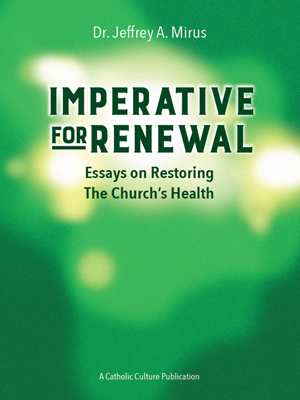Catholic Recipe: Crescents
On September 12, 1683, the great army of Turks which had besieged the city of Vienna for two months was finally attacked by the combined forces of Germans, Austrians, and Poles under the titular command of King John Sobiesky of Poland. The fierce battle lasted from dawn to evening, when the Turks, utterly beaten, retreated in headlong flight.
Among the immense booty, the victors found a great number of sacks filled with strange green beans. They took them to be fodder for the camels which the Turkish Pasha had brought along. Since the camels had fled with the army, this part of the booty seemed useless, and it was decided to dump it in the Danube. However, one of the inhabitants of the city, a man named Kolsinsky, who had been a prisoner of the Turks and knew their ways, explained that it was a fruit from which the Turks, after roasting it, made a popular drink. In return for valuable services rendered during the siege he asked permission to open a shop where he could sell this Turkish drink. The permission was readily granted, and he opened the first "coffee house" in the city.
When the people of Vienna tried the new drink, they found it not to their liking, for Kolsinsky served it the Turkish way — in small cups, with the grounds, black and unsweetened. A friend then advised him to make the drink more acceptable: "Strain it," he said, "so the grounds won't grit between the teeth. Add some milk to make it look brighter and sugar to make it sweet. And serve it together with something to eat. Why not use a new kind of pastry? Shape it in the form of the Turkish half-moon?" (The Turks had put their Mohammedan crescent on every church steeple in the place of the Christian cross.)
Kolsinsky followed the advice, and his products immediately became very popular. The people now enjoyed drinking the coffee prepared in this manner, and they gleefully devoured the "Turkish Crescent," the sight of which had filled them with terror during the war.
Thus started the custom, which has since spread from Vienna all over the world, of drinking coffee without grounds in the cup, of mixing it with milk or cream, and sweetening it with sugar. The pastry in form of the Turkish half-moon (crescent, croissant, Kipfel) also has remained a familiar sight on coffee tables up to this day.
DIRECTIONS
Dissolve yeast in water. Combine sugar, butter, salt and milk. Add milk mixture and egg to yeast when cool. Stir in flour; beat well. Turn into greased bowl. Cover and let rise in warm place to double in bulk. Turn dough onto lightly floured board; knead for 1 minute. Return to bowl and let rise again to double in bulk. Roll dough to a very thin sheet, about 1/8 inch thick. Cut into 5-inch squares. Cut each square diagonally into 2 triangles. Brush with melted butter. Roll triangles, beginning on diagonal. Shape in crescent shape. Place on greased baking sheet, let rise until light. Bake in 400° oven for 15 minutes.
Recipe Source: Catholic Cookbook, The by William I. Kaufman, The Citadel Press, New York, 1965






